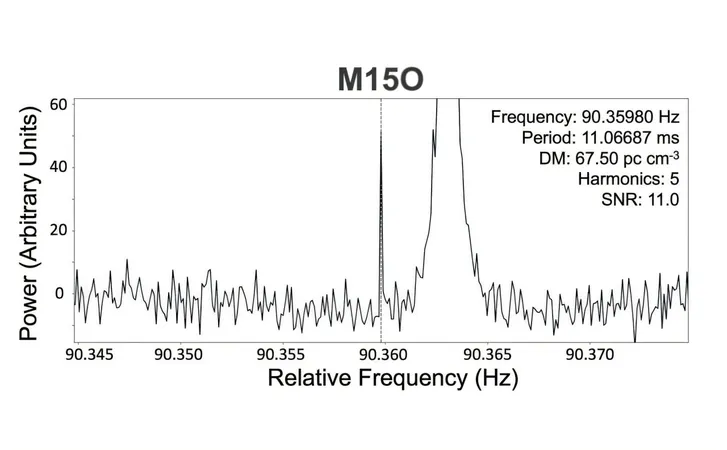
Astronomers Uncover Elusive New Pulsar After Years of Overlooked Signals!
2025-04-28
Author: Olivia
A Groundbreaking Discovery in the Cosmos!
In an exciting leap for astrophysics, Chinese astronomers have unveiled a new millisecond pulsar, dubbed PSR J2129-1210O. This stunning discovery comes courtesy of the cutting-edge Five-hundred-meter Aperture Spherical Radio Telescope (FAST), revealing a celestial wonder that has eluded scientists in previous searches due to signal interference.
What Exactly Are Millisecond Pulsars?
Pulsars are extraordinary, highly magnetized neutron stars that rotate at incredibly high speeds, emitting beams of electromagnetic radiation like cosmic lighthouses. Millisecond pulsars, or MSPs, are the speedsters of this category, spinning in less than 30 milliseconds per rotation.
The Stellar Backstory of MSPs!
These captivating stars are believed to form in binary systems, where the more massive star eventually evolves into a neutron star. It gains speed by siphoning material from its companion star, reaching the breathtaking rotation rates we observe.
NGC 7078: A Hotspot for Pulsar Hunting!
Nestled in the depths of space lies NGC 7078, also known as Messier 15 (M15), a globular cluster rich in pulsars. Located about 35,700 light-years away, M15 is one of the oldest and most densely packed clusters, making it an ideal spot for pulsar discoveries.
A Groundbreaking Search Campaign!
Between November 2019 and February 2024, a team of astronomers led by Yinfeng Dai from Guizhou University undertook an ambitious survey with FAST to search the depths of M15. Their efforts proved fruitful, leading to the detection of PSR J2129-1210O, with a rapid spin period of about 11.07 milliseconds.
An Overlapping Mystery!
Until now, this pulsar had remained hidden due to its spin period being very close to the 10th harmonic of another well-known pulsar, PSR J2129+1210A. This overlap created a challenge for conventional detection methods, causing established algorithms to miss the new ticking marvel.
Key Characteristics of PSR J2129-1210O!
The new pulsar boasts a dispersion measure of approximately 67.44 pc/cm³, sitting a mere 0.37 arcseconds from the cluster center and 0.81 arcseconds from its neighboring pulsar M15A. This proximity makes M15O the closest pulsar to the optical center of M15!
More Discoveries on the Horizon!
But the excitement doesn't stop with M15O! The FAST observations have also uncovered two additional pulsars, designated PSR J2129+1210M and PSR J2129+1210N. Stay tuned for more revelations as researchers prepare to disclose these findings in upcoming papers.
This discovery marks a significant chapter in our understanding of pulsars, shining a light on the intricacies of our universe and tantalizing us with the question: what other cosmic marvels await discovery?









 Brasil (PT)
Brasil (PT)
 Canada (EN)
Canada (EN)
 Chile (ES)
Chile (ES)
 Česko (CS)
Česko (CS)
 대한민국 (KO)
대한민국 (KO)
 España (ES)
España (ES)
 France (FR)
France (FR)
 Hong Kong (EN)
Hong Kong (EN)
 Italia (IT)
Italia (IT)
 日本 (JA)
日本 (JA)
 Magyarország (HU)
Magyarország (HU)
 Norge (NO)
Norge (NO)
 Polska (PL)
Polska (PL)
 Schweiz (DE)
Schweiz (DE)
 Singapore (EN)
Singapore (EN)
 Sverige (SV)
Sverige (SV)
 Suomi (FI)
Suomi (FI)
 Türkiye (TR)
Türkiye (TR)
 الإمارات العربية المتحدة (AR)
الإمارات العربية المتحدة (AR)